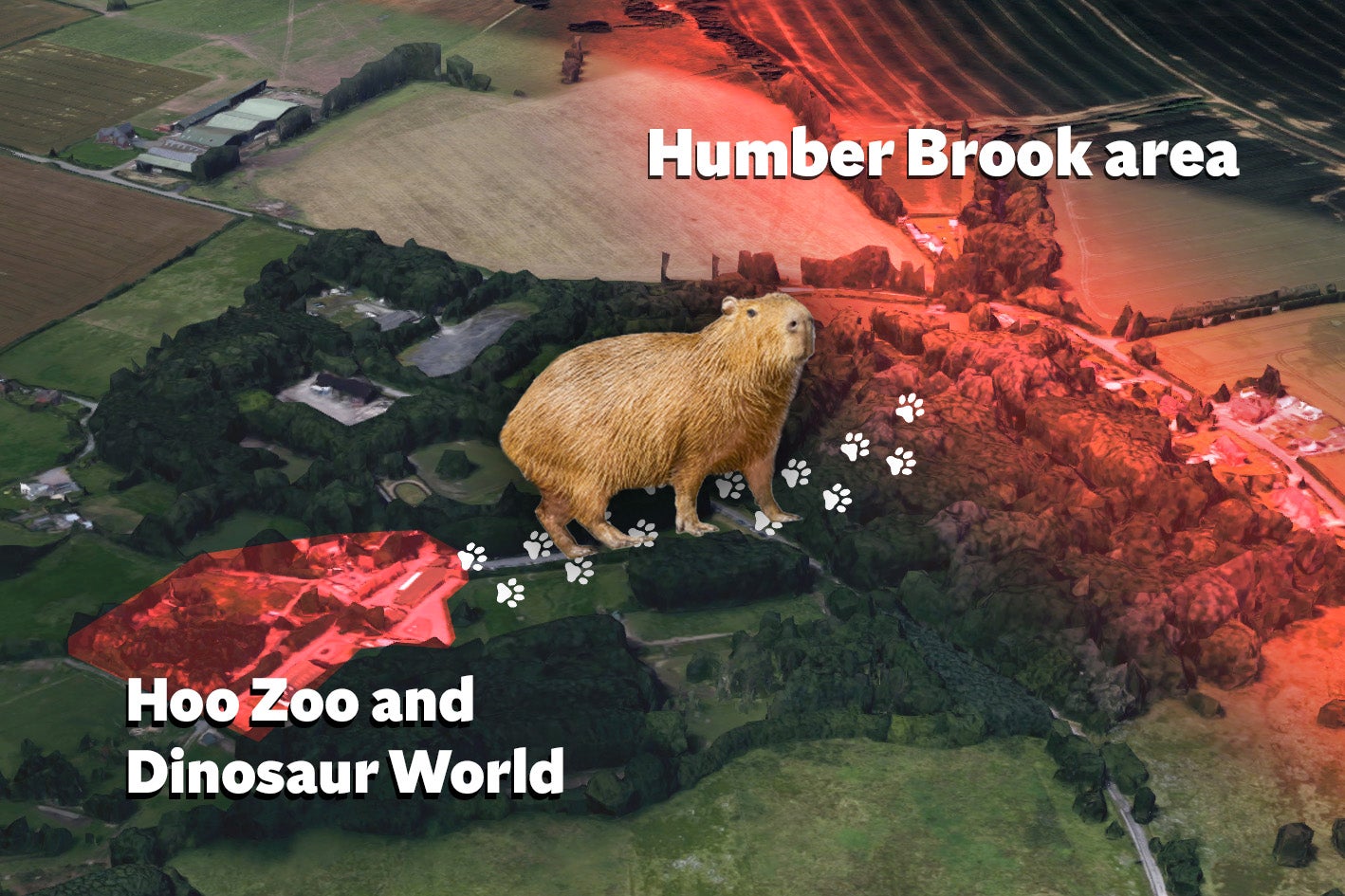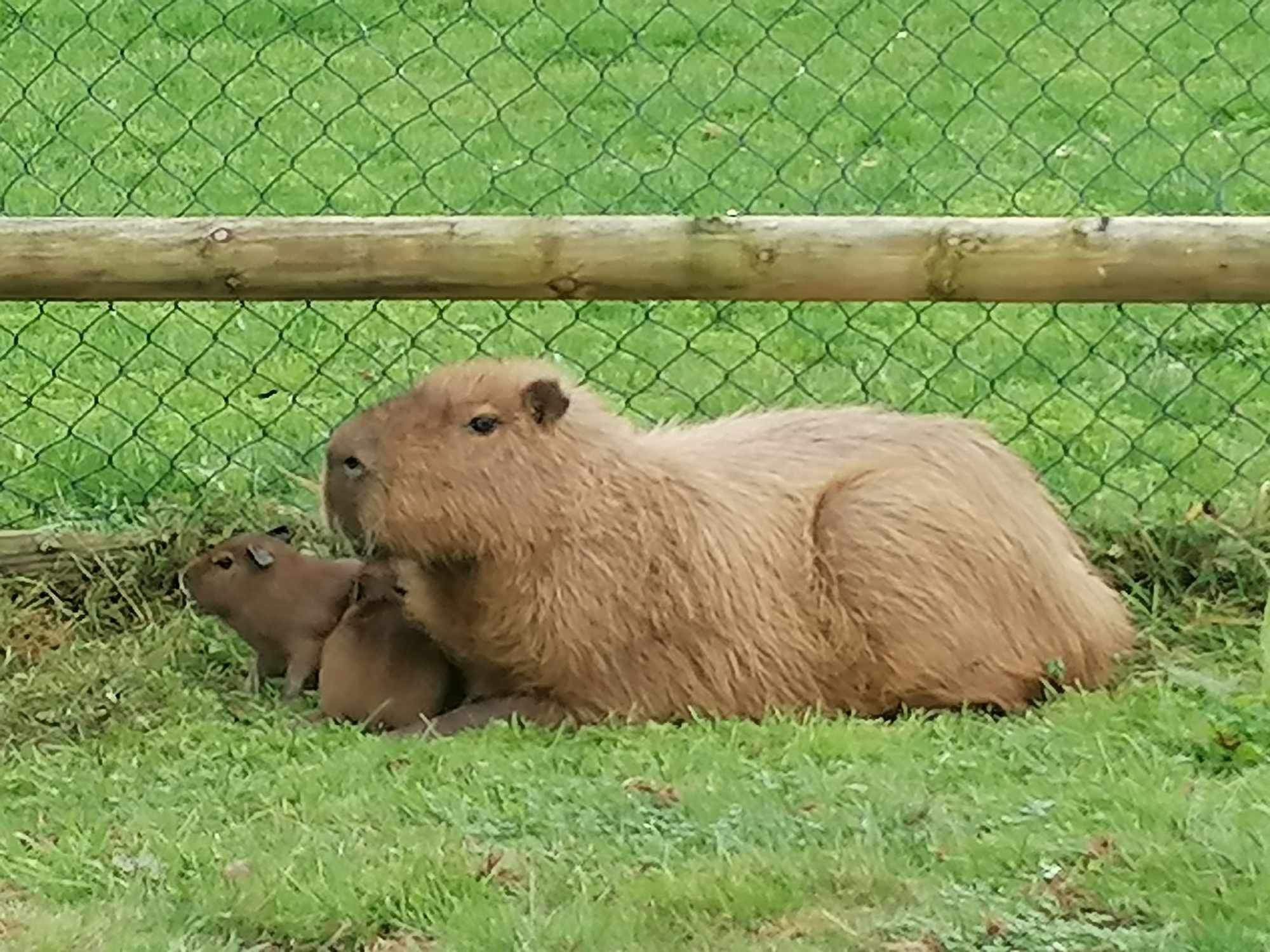Where is Cinnamon the capybara? The possible locations of escaped Hoo Zoo rodent
Hoo Zoo and Dinosaur World is launching a major search for Cinnamon after receiving new information after a public appeal
Your support helps us to tell the story
From reproductive rights to climate change to Big Tech, The Independent is on the ground when the story is developing. Whether it's investigating the financials of Elon Musk's pro-Trump PAC or producing our latest documentary, 'The A Word', which shines a light on the American women fighting for reproductive rights, we know how important it is to parse out the facts from the messaging.
At such a critical moment in US history, we need reporters on the ground. Your donation allows us to keep sending journalists to speak to both sides of the story.
The Independent is trusted by Americans across the entire political spectrum. And unlike many other quality news outlets, we choose not to lock Americans out of our reporting and analysis with paywalls. We believe quality journalism should be available to everyone, paid for by those who can afford it.
Your support makes all the difference.An around-the-clock search continues for a capybara that escaped a zoo four days ago.
Cinnamon fled her enclosure in Hoo Zoo and Dinosaur World in Telford on Friday and initially entered woodland within the zoo’s boundaries.
But now bosses believe that the rodent managed to get through the zoo’s perimeter fence.
They think she is located in an area around Humber Brook, outside the northern border of the zoo in Shropshire.
On Tuesday night, a “mass search” is being undertaken with a thermal drone for the animal within the pinpointed area. It comes as efforts to find the animal capture the interest of many on social media.
The search is being carried out by 20 people, but the zoo’s owner Will Dorrell said they have to keep going over the same areas because capybaras are “so good at hiding that we could literally be walking on top of her and not realising”.

There have been two suspected sightings of Cinnamon in waterways connecting with the Humber Brook - but Mr Dorrell said they believed the lost capybara was still near the zoo in the brook itself.
In a post on Facebook, the zoo said: “We’d like to thank everyone for their support and kind comments at this difficult time. Despite searching throughout the night there were no sightings of Cinnamon.
“However, we have received some very useful information from local residents and now believe that Cinnamon is likely living in and around the Humber Brook on our northern border.”
Capybaras, the largest rodent in the world and native to South America, are typically found near bodies of water and in dense forests.

They are highly social animals and typically live in groups of 10-20.
After her escape, the zoo launched an appeal to the public to help trace Cinnamon, while asking people not to try to touch the animal.
Cinnamon’s mother and brother have been spending more time near the part of the enclosure from which she went missing, Mr Dorrell told the Independent.
The post on social media continued: “We are getting lots of offers of help from local residents and we would like to ask you to keep you eyes peeled.
“Cinnamon is very timid and any attempt to capture her by untrained individuals could result in driving her further away from her home - which we want to avoid.”
The Humber Brook is surrounded by trees and would create a sheltered environment for Cinnamon, Mr Dorrell told the BBC.

There are “loads of marshland and riverways” near the zoo, and Capybaras are “fantastic swimmers” which are known to hide for hours at a time in water when they feel threatened, he said.
The zoo wants to reunite Cinnamon, who is around one year old, with her family.

Bosses said Cinnamon nearly returned to her enclosure on Friday night - when she was spotted on the zoo’s cameras - but she didn’t get close enough for keepers to catch her.
The zoo said: “Cinnamon is greatly loved and missed by her keepers who are continuing to give extra care to her parents and brother who remain at Hoo Zoo.”




Join our commenting forum
Join thought-provoking conversations, follow other Independent readers and see their replies
Comments